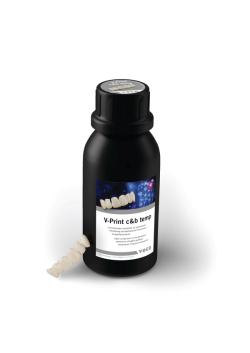- About Us
- Advertise
- Editorial
- Contact Us
- Terms and Conditions
- Privacy Policy
- Do Not Sell My Personal Information
© 2025 MJH Life Sciences™ and Dental Products Report. All rights reserved.
Safety Tips for In-House 3D Printing Labs Every Dental Practice Should Know
We share potential hazards regarding 3D printing and how you can avoid them in your in-house lab.
Per the International Journal of Environmental Research and Public Health, the popularity of 3D printers is growing exponentially for a couple of reasons. First, recently graduated dentists are digital natives not intimidated by technology. These dentists appreciate how additive manufacturing enhances the patient experience and creates new possibilities for CAD solutions.1
This begs the question: is using a 3D printer safe for the team and if not, what should practice stakeholders do to ensure that it is? We researched and here’s what we found.
Some 3D Printed Materials Can Be Hazardous to Our Health
The potential health hazards associated with 3D printing depend upon the printer and the materials used. The CDC identified some common risks associated with 3D printing that include:2
- Inhalation of harmful materials: 3D printing can release particulates and other hazardous chemicals into the air, which are harmful if breathed in.
- Skin contact with harmful materials: Exposure to metal powders, solvents, and other chemicals can harm the skin.
- Static electricity, fire, and explosion risks: Certain materials are flammable, and the high temperatures some printers generate can cause burns and pose a fire hazard.2
Recent research conducted by the Chemical Insights Research Institute (CIRI), a non-profit organization affiliated with safety research specialist Underwriters Laboratories, also highlights the potential health risks associated with 3D printing emissions, even in small quantities. In a recent toxicity study, CIRI researchers discovered that exposure to fumes generated during the printing of ABS (acrylonitrile butadiene styrene), or PLA (polylactic acid) filaments, 2 popular thermoplastics, that can lead to airway cellular injury and inflammation.3
Dental practices print with many different types of materials, mostly biocompatible, polymer-based 3D printed resins. International Dentistry’s 2022 publication suggests that this is because they result in printed objects with excellent physical properties regarding elasticity and tensile strength. In addition to the resins, there are also limited applications of metals and ceramics.4 So, there is less ABS and PLA involved. However, breathing in any of these materials used for dental while printing probably isn’t a good idea either.
So, Where is The United States Food and Drug Administration (FDA) in All This?
Since there are risks here, and dental is in the health care field, it feels like the FDA should be involved, and they are. However, there are no specific regulations for 3D printed workflow; only the regulations that are required for all dental devices (Part 820 Quality System Regulation).
In 2016, the FDA released a draft guidance titled "Technical Considerations for Additive Manufactured Devices" to offer advice to manufacturers utilizing 3D printing techniques to produce devices. This draft guidance was made available for public feedback and does not currently have the status of a final or effective document.5
The draft guidance is divided into 2 main sections:
- Design and Manufacturing Considerations: This section focuses on technical considerations that, if addressed, fulfill Quality System (QS) requirements for a device, based on its regulatory classification or applicable regulations. Although this draft guidance covers manufacturing considerations, it does not aim to comprehensively address all considerations or regulatory requirements for establishing a device's manufacturing quality system.
- Device Testing Considerations: This section outlines the type of information that should be included in premarket notification submissions 510(k), premarket approval (PMA) applications, humanitarian device exemption (HDE) applications, de novo requests, and investigational device exemption (IDE) applications for a 3D printed device.5
Many organizations have weighed in with their recommendations, too. For example, the National Institute for Occupational Safety and Health (NIOSH) continues to look into the potential hazards of 3D printing, as well as how to protect those that work with them.2
How to Protect Your Team When 3D Printing
Amongst the many sources we found, there is a general agreement on a few standard precautions a dental practice should take. The scientists at CIRI recommend including discussions on operating extrusion 3D printers from a safe distance, as well as implementing ventilation and filtration mitigation strategies, in the safety guidelines concerning these machines.3
NIOSH also conducted extensive research on mitigating exposure to hazards associated with 3D printing. Several measures have been identified to reduce risks, including:
- Restricting equipment access to trained or authorized personnel.
- Employing enclosures for 3D printers and implementing ventilation systems to capture chemical emissions.
- Utilizing materials that emit lower levels of hazardous substances.
- Minimizing proximity to the printer while it is operational.
- Providing comprehensive training to workers regarding potential hazards and appropriate protective measures.
- Mandating the use of suitable personal protective equipment, such as safety glasses, gloves, or lab coats.2
The following 13 3D printing precautions were assembled by Graphic Products, a workplace labeling and signage company, from the recommendations from Carnegie Mellon University, University of Florida, and University of Vermont:6
- Refer to Safety Data Sheets (SDSs) for printing materials.
- Provide OSHA safety training for individuals handling hazardous 3D printer chemicals.
- Ensure proper training in the correct and safe operation of the 3D printer.
- Use 3D printers in well-ventilated areas.
- Maintain static-free workspaces when using metal materials.
- Avoid opening 3D printer covers during print jobs.
- Equip the facility with Class D fire extinguishers and provide training on their use.
- Wear a protective P100 respirator dust mask when accessing the printer stage area.
- Handle uncured printing materials with neoprene or nitrile gloves.
- Have an emergency eyewash station nearby for print processes involving alkaline baths.
- Wear eye protection around liquid materials that may splash.
- Use solvent-absorbent pads for spills of printing material.
- Store model and support materials away from areas where food and drinks are stored, prepared, or consumed.
Safety + Health, an NSC Safety publication, adds that dental practices should give the printer extruder time to cool down before getting the printed product. Having patience here can limit potential burns from hot surfaces. Also, they warn that the dental practice should notice the state of the power cords to avoid electrical shocks. In addition, having visual aids, like warning stickers on the printer or the printing room door for areas too hot to touch or about some other hazard is essential—and should be where operators can’t miss them.7
Moreover, there are some things that are critical to consider about the printer maintenance. Per the International Journal of Environment Research and Public Health, it is essential to clean the surface of the printed dental devices and the printer with isopropyl alcohol (IPA). However, it is crucial to handle the excess methacrylate and other uncured resin monomer sediments dissolved in IPA as hazardous waste, and proper management should be ensured by engaging a waste disposal company.
It’s also a good idea to keep the printer isolated. There shouldn’t be eating or drinking around it, and rounding mats for static electricity are a good idea.8
There is a low risk of fire, but that doesn’t mean there is no risk. Purchasing a printer that has a thermal runway feature is good idea as it shuts down the printer automatically if it is getting too hot. In addition, ensure that the 3D printer isn’t around flammable material and that the room where it is has a smoke detector installed.8
It is important to mention that what NIOSH has learned so far is that none of the dangers related to 3D printing are unmanageable, even the chemical and particulate challenges.2 In other words, dental practices can control the risks and exposures related to 3D Printing, and protect their teams by being aware of the risks, paying attention to these safety details, and communicating them to the team.
References
Hegedus T, Kreuter P, Kismarczi-Antalffy AA, et al. User Experience and Sustainability of 3D Printing in Dentistry. Int J Environ Res Public Health. 2022;19(4):1921. Published 2022 Feb 9. doi:10.3390/ijerph19041921
3D Printing Safety at Work. Centers for Disease Control and Prevention. Accessed June 1, 2023. https://www.cdc.gov/niosh/newsroom/feature/3Dprinting.html
Shaikhnag, A. et al. (2022) CIRI calls for safety advice revamp after health concerns raised by 3D printing emission research - 3D Printing Industry, 3D Printing Industry. Accessed June 1, 2023. https://3dprintingindustry.com/news/ciri-calls-for-safety-advice-revamp-after-health-concerns-raised-by-3d-printing-emission-research-215587/
Nulty, A.Moderndentistrymedia.com. Accessed June 1, 2023.https://www.moderndentistrymedia.com/apr_may2022/ID-AE_12-2_Nulty.pdf
FDA’s Role in 3D Printing. Published 2019. Accessed June 1, 2023. https://www.fda.gov/medical-devices/3d-printing-medical-devices/fdas-role-3d-printing
3D Printing Hazards | Graphic Products. Published 2023. Accessed June 1, 2023. https://www.graphicproducts.com/articles/3d-printing-hazards/
3D printing and worker safety. Published 2023. Accessed June 1, 2023. https://www.safetyandhealthmagazine.com/articles/18295-d-printing-and-worker-safety
Manufactur3dmag.com. Published 2023. Accessed June 1, 2023. https://manufactur3dmag.com/7-health-and-safety-considerations-during-3d-printing/



